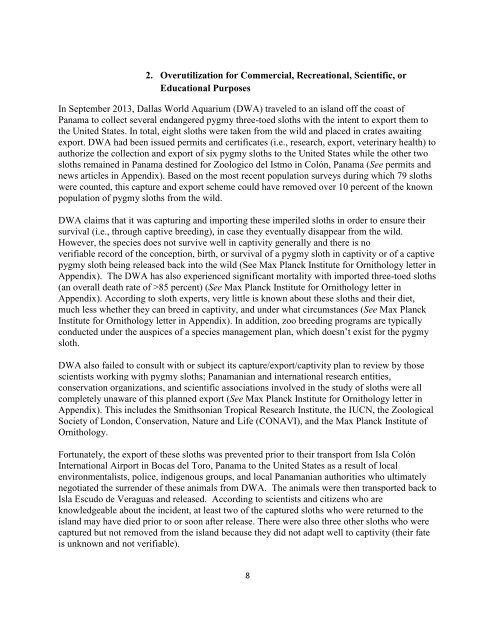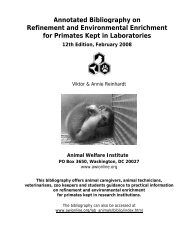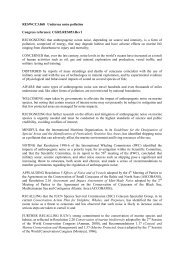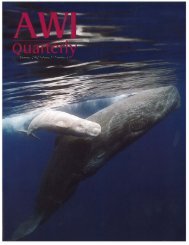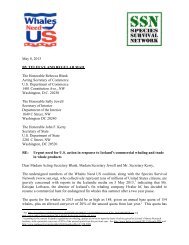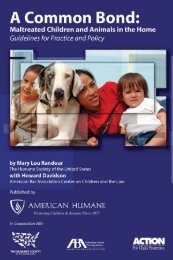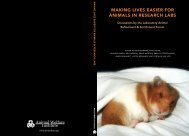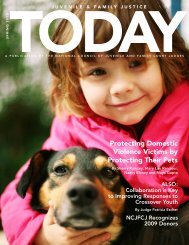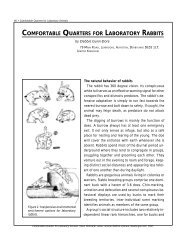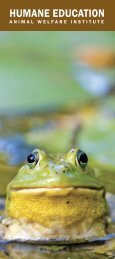EMERGENCY PETITION TO LIST THE PYGMY THREE-TOED SLOTH
EMERGENCY PETITION TO LIST THE PYGMY THREE-TOED SLOTH
EMERGENCY PETITION TO LIST THE PYGMY THREE-TOED SLOTH
Create successful ePaper yourself
Turn your PDF publications into a flip-book with our unique Google optimized e-Paper software.
2. Overutilization for Commercial, Recreational, Scientific, orEducational PurposesIn September 2013, Dallas World Aquarium (DWA) traveled to an island off the coast ofPanama to collect several endangered pygmy three-toed sloths with the intent to export them tothe United States. In total, eight sloths were taken from the wild and placed in crates awaitingexport. DWA had been issued permits and certificates (i.e., research, export, veterinary health) toauthorize the collection and export of six pygmy sloths to the United States while the other twosloths remained in Panama destined for Zoologico del Istmo in Colón, Panama (See permits andnews articles in Appendix). Based on the most recent population surveys during which 79 slothswere counted, this capture and export scheme could have removed over 10 percent of the knownpopulation of pygmy sloths from the wild.DWA claims that it was capturing and importing these imperiled sloths in order to ensure theirsurvival (i.e., through captive breeding), in case they eventually disappear from the wild.However, the species does not survive well in captivity generally and there is noverifiable record of the conception, birth, or survival of a pygmy sloth in captivity or of a captivepygmy sloth being released back into the wild (See Max Planck Institute for Ornithology letter inAppendix). The DWA has also experienced significant mortality with imported three-toed sloths(an overall death rate of >85 percent) (See Max Planck Institute for Ornithology letter inAppendix). According to sloth experts, very little is known about these sloths and their diet,much less whether they can breed in captivity, and under what circumstances (See Max PlanckInstitute for Ornithology letter in Appendix). In addition, zoo breeding programs are typicallyconducted under the auspices of a species management plan, which doesn’t exist for the pygmysloth.DWA also failed to consult with or subject its capture/export/captivity plan to review by thosescientists working with pygmy sloths; Panamanian and international research entities,conservation organizations, and scientific associations involved in the study of sloths were allcompletely unaware of this planned export (See Max Planck Institute for Ornithology letter inAppendix). This includes the Smithsonian Tropical Research Institute, the IUCN, the ZoologicalSociety of London, Conservation, Nature and Life (CONAVI), and the Max Planck Institute ofOrnithology.Fortunately, the export of these sloths was prevented prior to their transport from Isla ColónInternational Airport in Bocas del Toro, Panama to the United States as a result of localenvironmentalists, police, indigenous groups, and local Panamanian authorities who ultimatelynegotiated the surrender of these animals from DWA. The animals were then transported back toIsla Escudo de Veraguas and released. According to scientists and citizens who areknowledgeable about the incident, at least two of the captured sloths who were returned to theisland may have died prior to or soon after release. There were also three other sloths who werecaptured but not removed from the island because they did not adapt well to captivity (their fateis unknown and not verifiable).8


